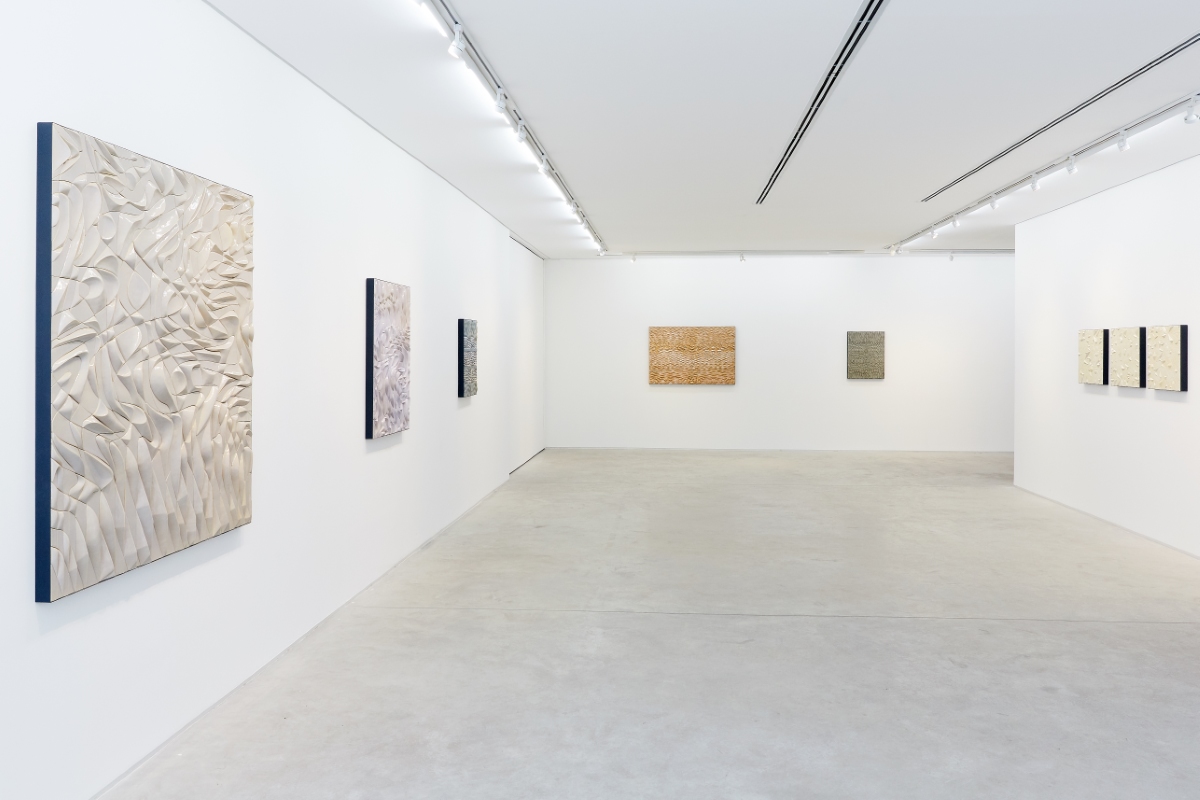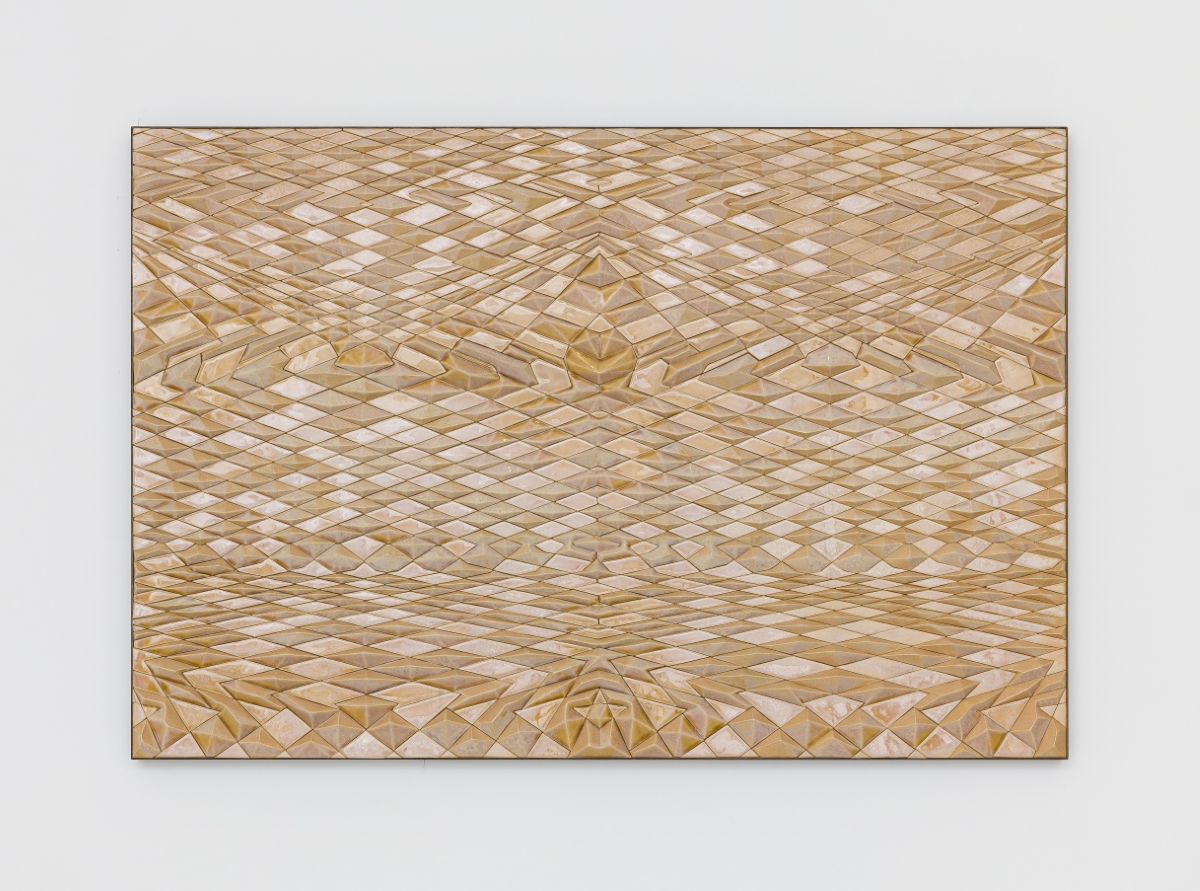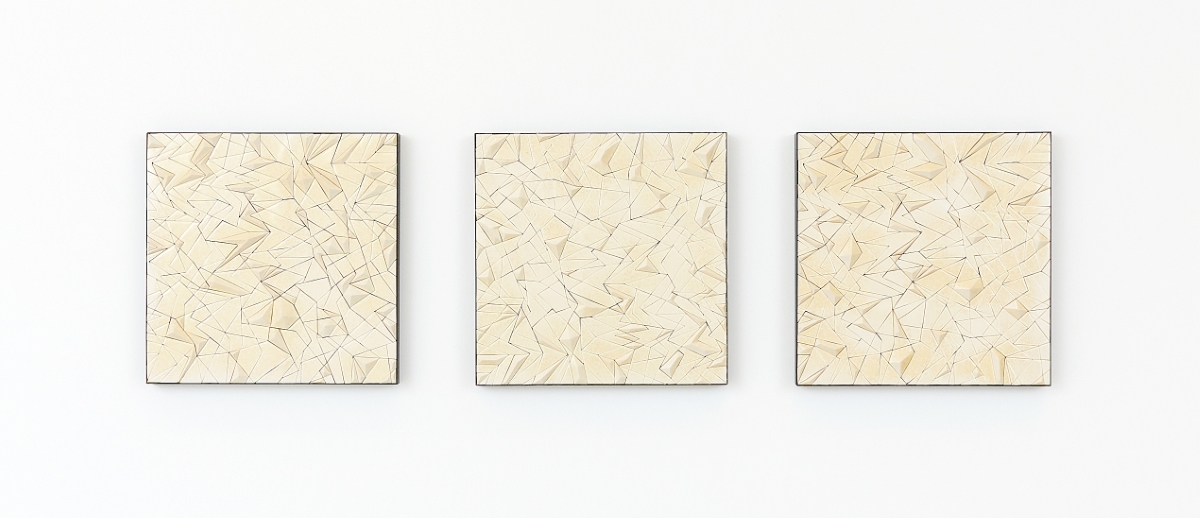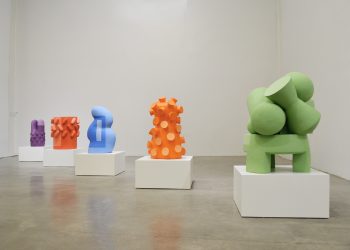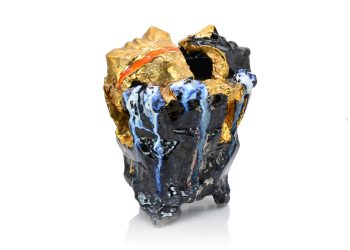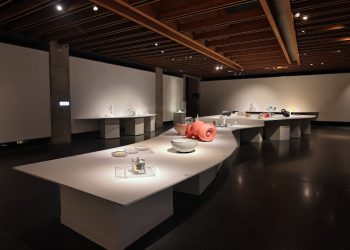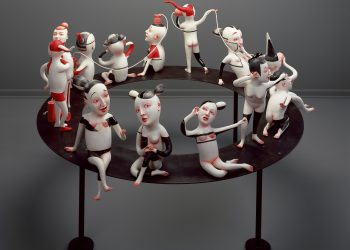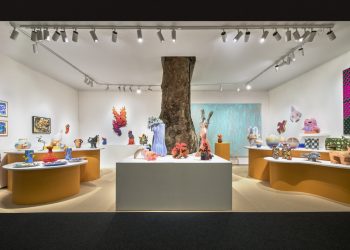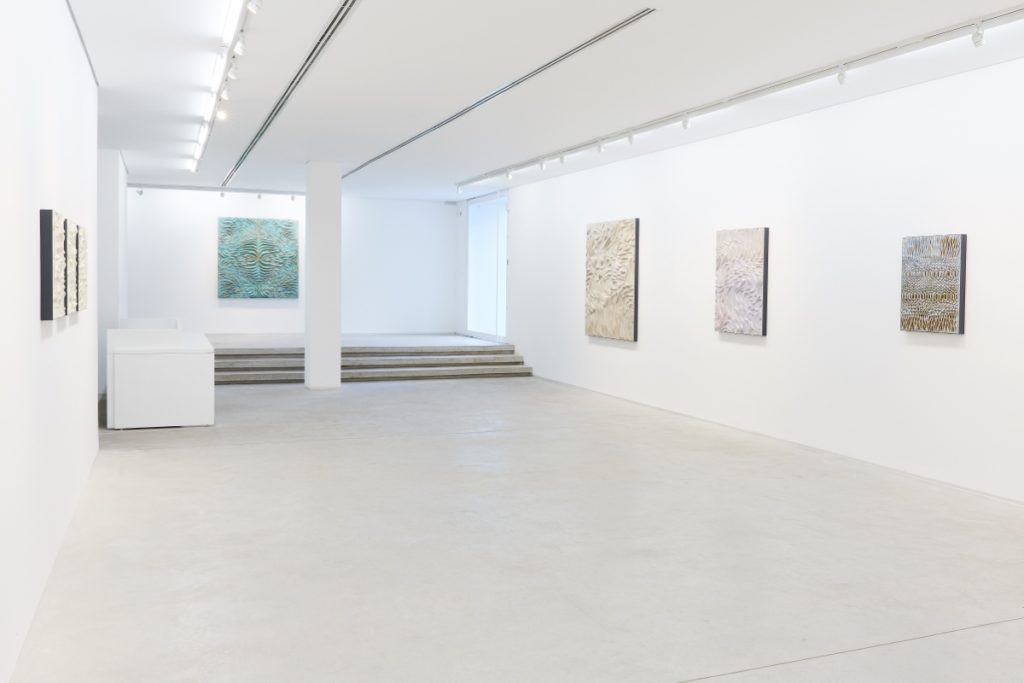
Installation view 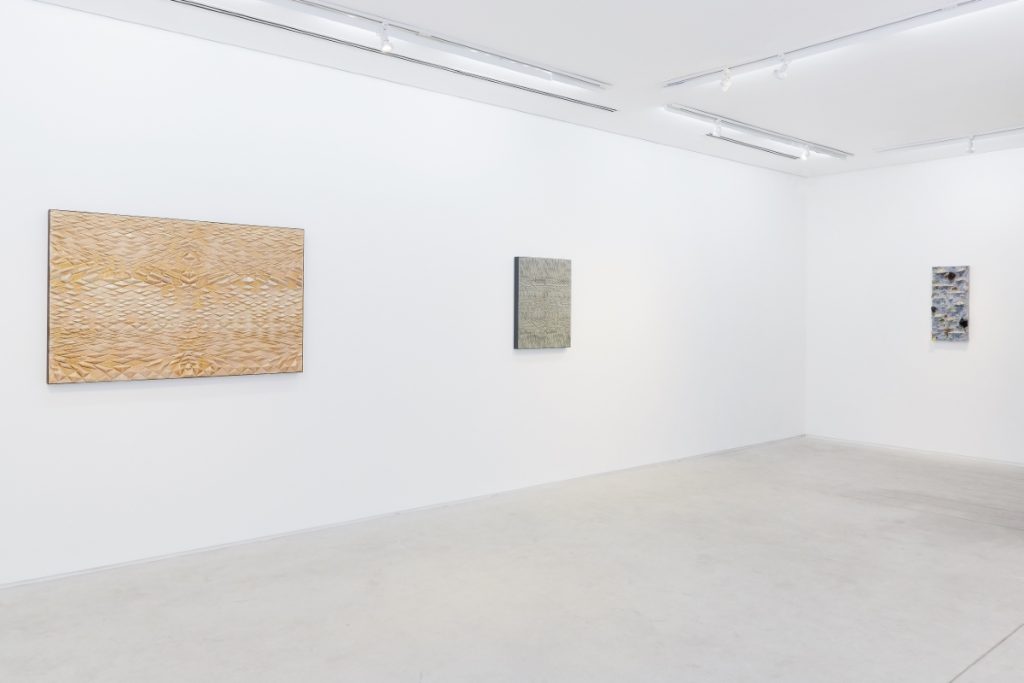
Installation view 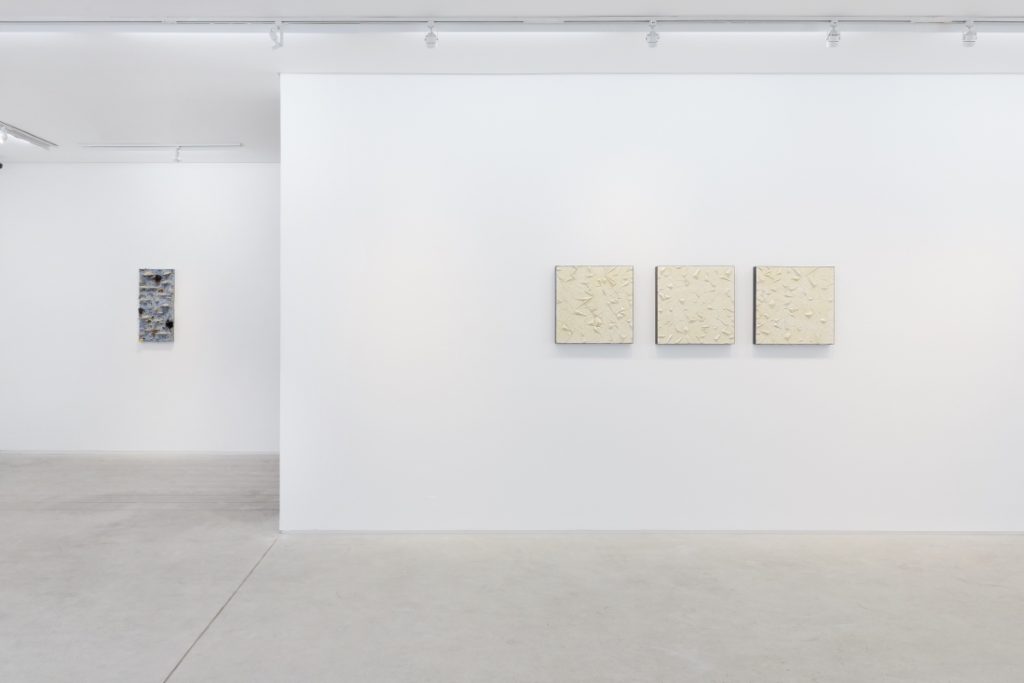
Installation view 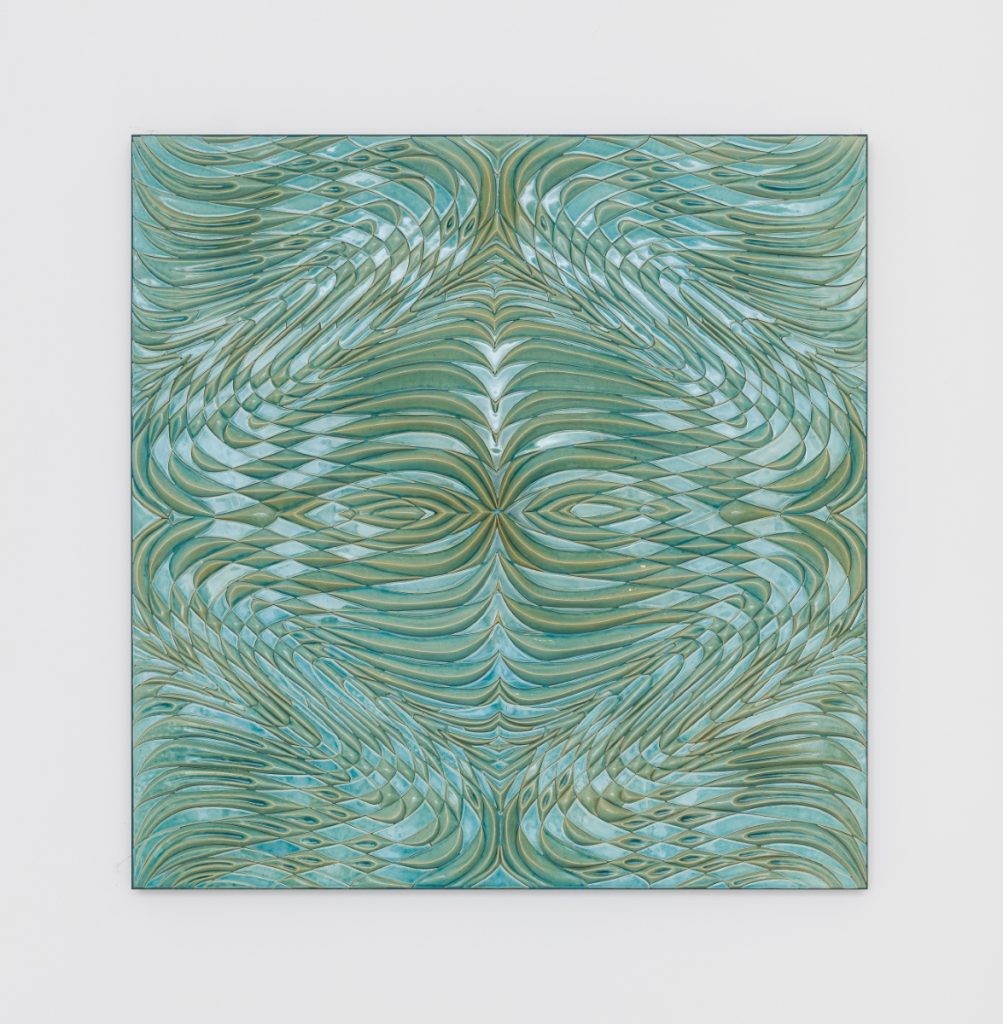
Deep Ocean, 2020, glazed ceramic on aluminum, 144 x 140 cm 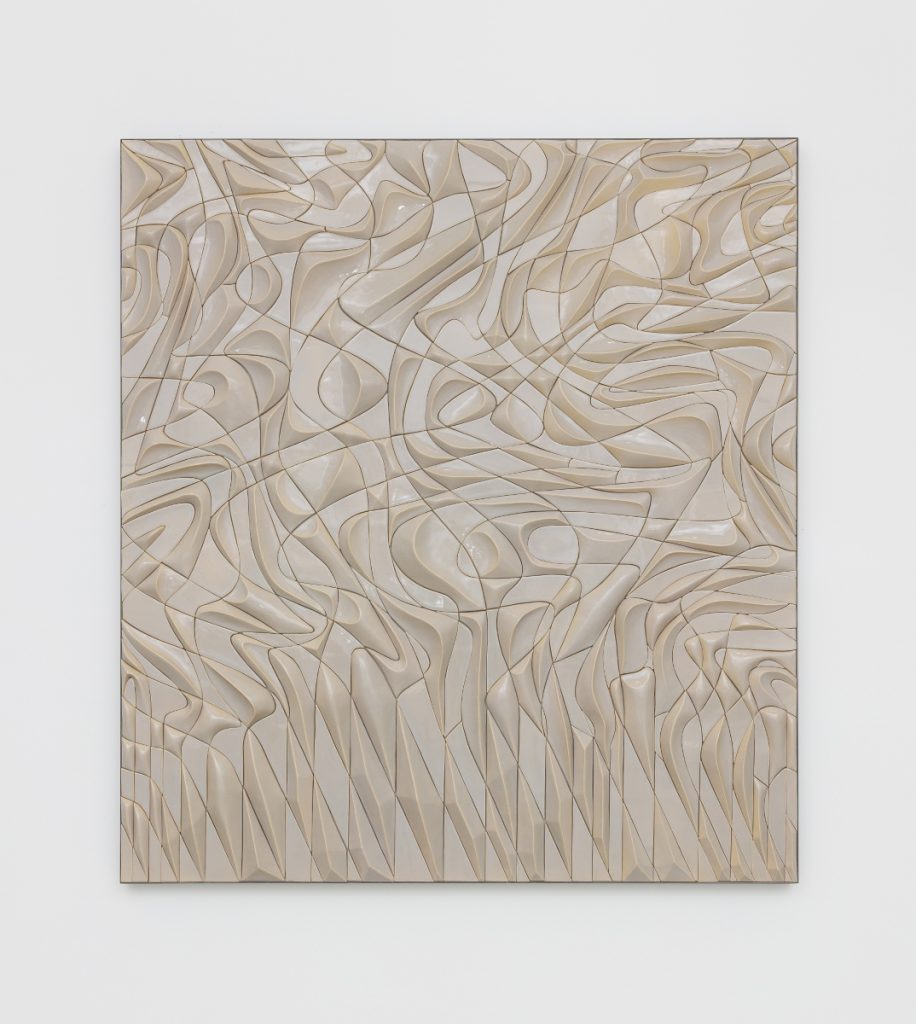
Transição Assimétrica, 2020, glazed ceramic on aluminum, 150 x 136 x 5 cm 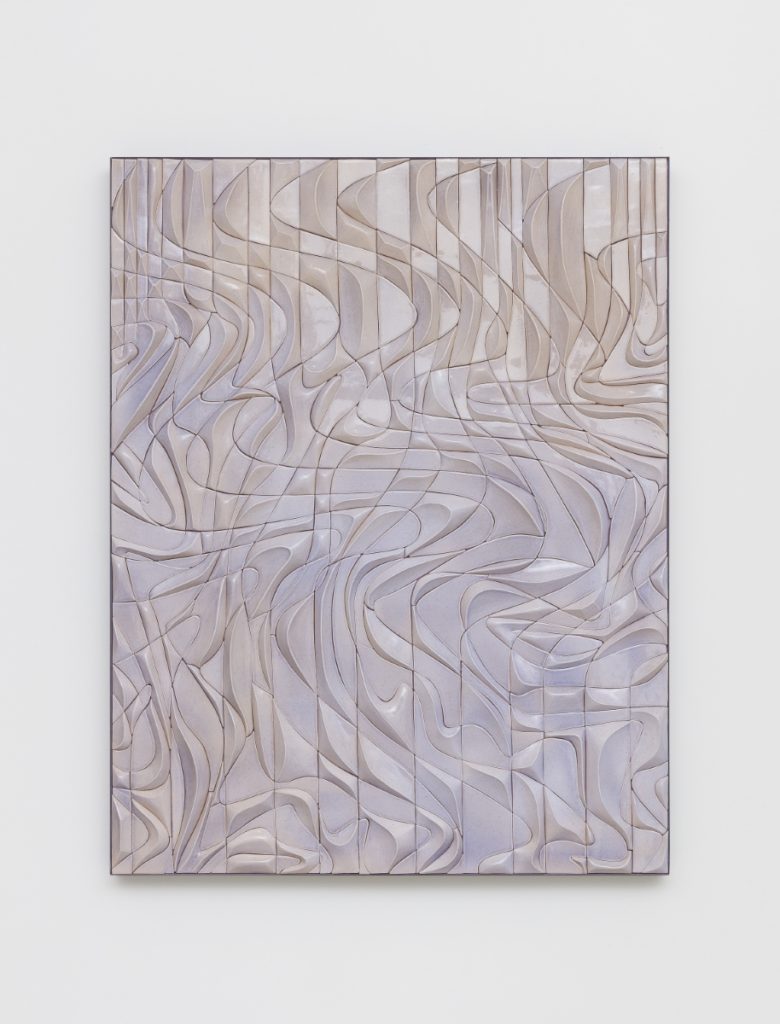
Transição Assimétrica II, 2020, glazed ceramic on aluminum. 103 x 80 x 5 cm 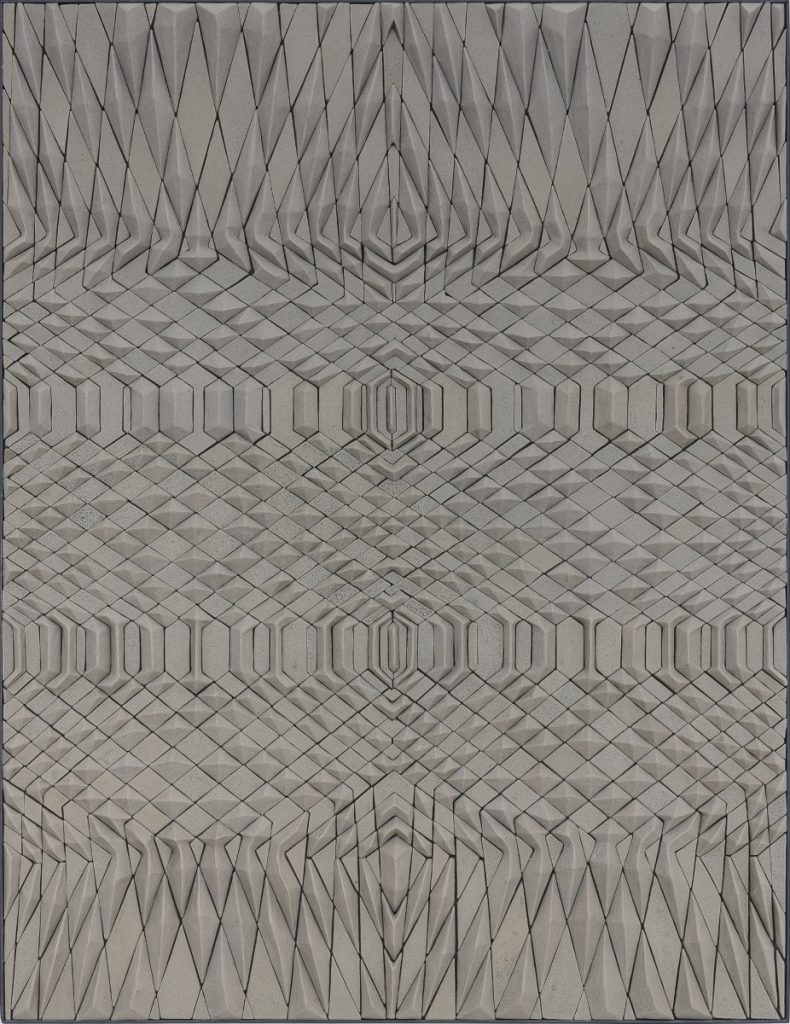
Estratificação Geométrica II V1, 2020, glazed ceramic on aluminum, 72 x 56 x 5,5 cm 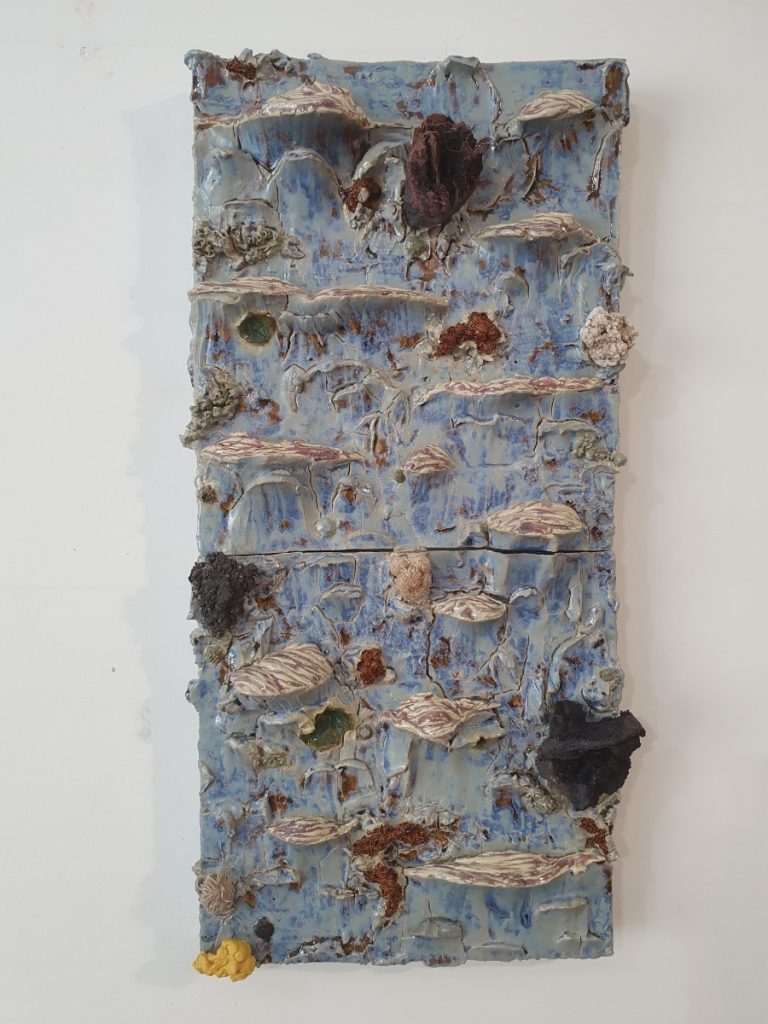
Cascata Invertida, 2020, pigmented ceramic, ceramics and rocks, 75 x 36 x 10 cm 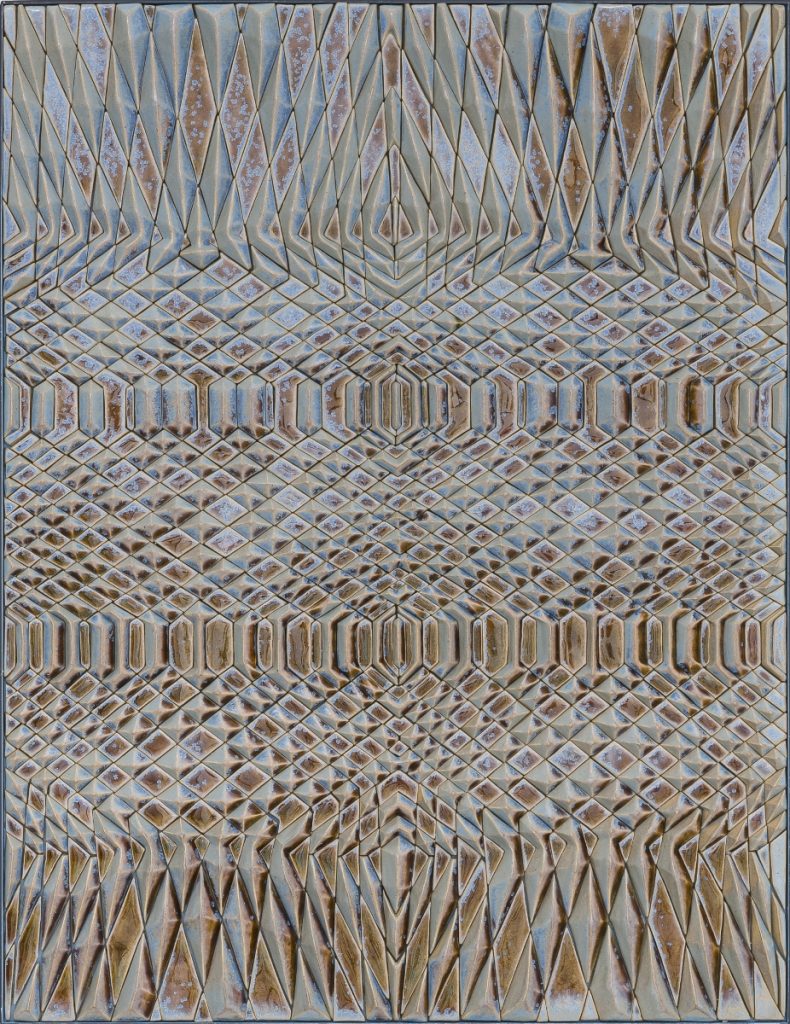
Estratificação Geométrica II V2, 2020, glazed ceramic on aluminum, 72 x 56 x 5,5 cm
Juan Parada: Ceramic Turbulences is on view at Simões de Assis, São Paulo
September 19 – October 31, 2020
The Ceramic Turbulences of Juan Parada
In the current times of 3D printers that slowly expel a thread of melted plastic to materialize a sequence of abscissas and ordinates, Juan Parada (born in 1979 in Curitiba, Paraná State, Brazil, currently living and working in São Paulo City Capital) explores an entirely different sculptural method. His reliefs, to be addressed here, are created from the alchemy of ceramic and its slow process – orchestrated by the hand and by the heat of fire – from the “humus” of the earth to the “lapis lazuli” of the stone. Differently from the millenary ceramic, however, such transmutation does not end in the firing process, but is extended to the versatile characteristic of the works and and along its high resonance with life.
The process to create relief painting is actually free from the nostalgia of handicraft, when resorting to ceramic would stand as a reaction to modernity. Therefore, its first disegno is created through the use of a computer software. At times, it reproduces the propagation of sound waves (Sound Topography, 2017) or magnetic waves, and frequently takes up a square shape of vibrant colors defined by the intersection of multiple, undulating lines in different layers. The following stages are manual, except the firing process, of course. In Tethys Sunset (2020), for instance, the drawing is transferred to a clay board where it is engraved. Each element is then cut and given material prominence to create the relief. Those elements make up a volume that is a few centimeters high and are assembled on the plane surface as a puzzle. Then, through the use of a brush or spray, they are covered with a thin layer of paint or metalic powder. The firing and glazing process produce thin fissures, light dégradés, star shapes, subtle iridescences or even some delicate glitter. The different micro patterns and luminous modulations are revealed to attentive viewers only, as in Geometric Stratification (Estratificação Geométrica – 2019), where the faceted shape of each module creates a combination of light and shadow, conveying unstable colors and shades. Parada considers ceramic an “elastic means”, of “subversive nature”, in opposition to the limitations imposed by its traditional use. Thus, shaped and harmonized in its composition, each work emerges as a labyrinth of one thousand entrances and exits through which the eye – channeled, since it is subject to this hypnotic guidance – constantly returns in its trajectory. As if interrupted in their movement, the petrified flows and waves – as frozen fragments of a continuum, capture the eye –here, a reminder of The Great Wave off the Coast of Kanagawa, the famous print by Hokusai (1830).
The complex undulatory geometry that guides the optical patterns of Strange Attractors I and II (Estranhos Atratores I e II) is a legacy from neoconcrete artists. Such as Lygia Clark, for instance. In 1960, her first Animal (Bicho) already associated geometric rigor to the variability of living beings, and was given to Sérgio Camargo, whose monochromatic reliefs, filled with small, cutout cylinders were equally ambiguous. In addition to this obvious reference, Parada also gets inspiration for the characteristic movement of his patterns in the kinetic art of the 1960’s and 1970’s, such as Bridget Riley’s, Enrico Castellani’s, and Abraham Palatnik’s. His reliefs, however, as in Lines of Power (Linhas de Força – 2016), refer to biological elements – such as spider webs and the carapace or skin of certain reptiles – since above all, Juan Parada presents naturalistic, organic (even if visceral) aesthetics. Small sand waves created by ocean currents will serve, for instance, as the starting point for the reliefs in the series Compliment to the Water (Elogio à Água – 2018), whose moulds were created directly on Superagui beaches (especially preserved from human presence).
A naturalistic story, even ecological, can also be seen in the first transparent glass sculptures in the shape of a beehive that holds different vegetal contents (Series Encasing [Invólucros, 2013-15]), and is meant to be inserted in architectural reliefs. The Symbiotic Volumes (Volumes Simbióticos – 2011-12), however, evoke the basic forms of Minimal Art – as the L-Beams (1965) by Robert Morris – although one of the surfaces – either external or internal, holds abundant vegetation. Those shapes do involve viewers at times – in Anish Kapoor fashion – but on a very dense mould, made up of plants and flowers (Memory of Matter – Memória da Matéria, Museu da Gravura, Curitiba, 2012). By the way, this sort of environment was mineralized as late as 2018, in the work Glaciers (Glaciares), which incorporates a monochromatic ceramic all-over surface. It is a panoramic, immersion creation, evoking the panoramic curve of the Nymphéas, by Claude Monet, at the Orangerie Museum in Paris (1915-26).
Even if the tondo (circular) shape of certain reliefs echoes the history of shaped canvas, Parada leads viewers to the inner visual pattern, rather than offer them an object of study to be observed coldly from a distance (we have in mind Mark Rothko or Barnett Newman, who advocated a reduced distance between their work and spectators with the purpose of enhancing the feeling of immersion). That absorption tropism – both of the eye and of the body – is crucial in relief painting. Such practice is actually paradoxical in Parada: it leads to the coexistence, which is not simple, of the undulatory and phenomenal nature of life and the invariable hardness of the “lapis lazuli”, the geometric rigor of the pattern and the curved materiality of the relief, whose prominences and recesses evoke those shapes in the human body. A recent relief, Inverted Cascade (Cascata Invertida – 2020), displays a clear wave motif, that is true, but turned upwards, inverting the sense of gravity. Various excrescences, at times organic, recurrent to viscera, at times geologic, recurrent to rocks, emerge from those vertical waves. Their strangeness, which may raise certain aversion, refutes the ornamental label to which the artist could be wrongly associated. Having been developed for about ten years, as unique and promising as such practice may be, it is part of a wider historic perspective.
Parada’s artistic creation is rooted in the post-war years in the mingling of abstract art and perception psychology, optical rule and manual trace, kinetics and neo-concretism, geometry and psychedelia. Among the avant-garde actors, German Heinz Mack – founder of ZERO Group in 1957 with the works Metallreliefs or Lichtreliefs – starts a constant dialogue between order and chaos, matter and light that was important for Juan Parada. Although abstract, his two works evoke the action of natural elements – sunlight, wind, and rain in aquatic or desertic surfaces – whose appearance owes nothing to chance but rather comes from the action of fluid forces over malleable material, without at the same time disregarding the rigorous economy of Lee Ufan’s visual means (with simple touches of paint on relief on immaculate canvases). The general result of this process naturally evokes Piero Manzoni’s pleated fabric covered with white kaolin in his series of “Achromes”. However, while the work of the Italian artist reminds us of the folds in the sculptures of Ancient times, that of Mack’s and Parada’s stand out from their natural echo and their perceptive dynamics.
Heinz Mack gave his view about the desire to separate the phenomenic and perceptive aspects of the work from its strictly material support: “I could no longer see a metal relief, but a vibrating, pulsating structure made of light. My feeling was that the structure hovered over a metal relief, getting detached from it, as the reflection of light on the ocean that starts vibrating under intense sun and taking up the appearance of a rug of light made of dancing ligh” . Resorting to different aesthetic and material terms, through a material, tangible mould, Juan Parada’s aim is to make us aware of the undulatory, rhythmic, corporified nature of life, as the last resistence to the transformations in the digital world.
Text by Matthieu Poirier, PhD.
Contact
info@simoesdeassis.com
+55 11 3062-8980
Address
Rua Sarandi 113 A
01414-010 São Paulo
Brasil
Photos courtesy of the gallery


